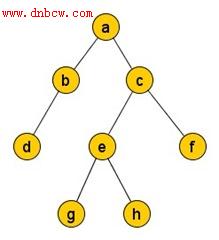ACM_程式設計競賽:窮舉法:BFS(廣度優先)
阿新 • • 發佈:2019-02-18
- 類似於層次遍歷
- 首先訪問起始頂點v,
- v出發,依次訪問領接的頂點
w1,w2,...,wi 不後退,一步可以訪問一批結點
//結果:abcdefgh
//演算法:
bool visited[MAX_VERTEX_NUM];//訪問標記陣列
void BFSTraverse(Graph G){
//圖G進行廣度優先遍歷,設訪問函式visit()
for(i=0;i<G.vexnum;++i)
visited[i]=FALSE
InitQueue(Q); //初始化輔助佇列
for(i=0;i<G.vexnum;++i) //從0開始遍歷
if - 複雜度
藉助佇列工作:空間複雜度:O(|V|)
領接矩陣:查詢每個頂點的時間複雜度是O(|v|2)
領接表:查詢的時間(O(|E|)),訪問的時間O(|v|); 總時間=O(|V|+|E|)
迷宮最短路徑
- 給定一個大小是N*M的迷宮,每一步向領接的上下左右四格的通道移動。請求出從起點到終點所需的最小步數
限制條件:N,M<=100
* 輸入
N=10,M=10
#: 牆壁;.:通道; S:起點 G:終點
#S########
......#..#
.#.##.##.#
.#........
##.##.####
....#....#
.#######.#
....#.....
.####.###.
....#...G#
輸出:22- 演算法:
- 有近及遠的順序操作
- 將訪問過的狀態標註
- d[N][M]陣列表示最短距離
#include <stdio.h>
#include <string.h>
#include <queue>
using namespace std;
struct node
{
int x,y,step;
};
char map[105][105];
int vis[105][105];
int to[4][2]= {1,0,-1,0,0,1,0,-1};
int n,m,sx,sy,ex,ey,ans;
int check(int x,int y)
{
if(x<0 || x>=n || y<0 || y>=m)
return 1;
if(vis[x][y] || map[x][y]=='#')
return 1;
return 0;
}
void bfs()
{
int i;
queue<node> Q;
node a,next;
a.x = sx;
a.y = sy;
a.step = 0;
vis[a.x][a.y]=1;
Q.push(a);
while(!Q.empty())
{
a = Q.front();
Q.pop();
if(map[a.x][a.y]=='E')
{
ans = a.step;
return ;
}
for(i = 0; i<4; i++)
{
next = a;
next.x+=to[i][0];
next.y+=to[i][1];
if(check(next.x,next.y))
continue;
next.step=a.step+1;
vis[next.x][next.y] = 1;
Q.push(next);
}
}
ans = -1;
}
int main()
{
int t;
scanf("%d",&t);
while(t--)
{
scanf("%d%d",&n,&m);
int i,j;
for(i = 0; i<n; i++)
scanf("%s",map[i]);
for(i = 0; i<n; i++)
{
for(j = 0; j<m; j++)
{
if(map[i][j]=='S')
{
sx = i;
sy = j;
}
}
}
memset(vis,0,sizeof(vis));
bfs();
printf("%d\n",ans);
}
return 0;
} 
